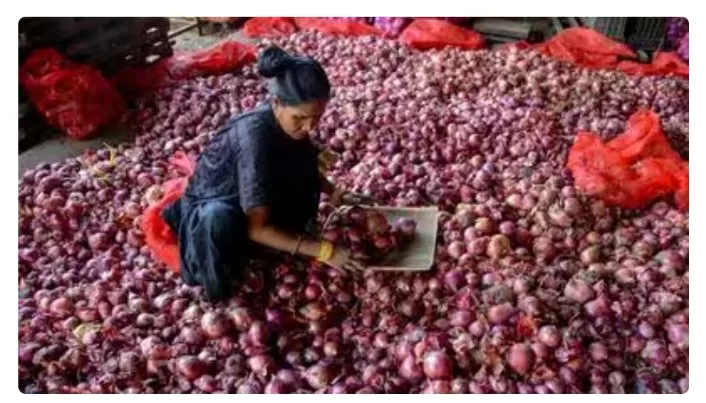In a bid to address the escalating prices of onions, the Union government has commenced the sale of this staple vegetable at a subsidized rate of ₹25 per kilogram in more than a dozen major cities. This measure aims to enhance accessibility and mitigate the current surge in onion prices, driven primarily by reduced supplies resulting from delayed summer crop harvests.
The spike in onion prices marks the second such occurrence within the past six months. To curtail the situation, the government has imposed a minimum export price (MEP) of $800 per tonne. The MEP serves as a threshold price, preventing exporters from selling below this rate to international buyers, effectively curbing overseas shipments.
The recent surge in retail prices, reaching ₹70-80 per kilogram in some urban centers, is a cause for concern among consumers. This is particularly pronounced given the ubiquitous use of onions in Indian cuisine, rendering consumers highly sensitive to fluctuations in onion prices compared to other grocery items.
Efforts to counter this situation have been initiated, with two state-backed food agencies mobilizing to sell subsidized onions from the government’s stockpile of 500,000 tonnes. These operations have been launched in several cities, including Delhi, Jaipur, Bikaner, Kota, Chandigarh, Jalandhar, Bhopal, Raipur, and Hyderabad.
Data reflecting the government’s intervention indicates a moderation in prices in select consumption centers. An official source stated, “Prices have already begun to recede and are expected to decline further due to the imposition of minimum export prices and the government’s provision of affordable onions.”
Mitigating food inflation is a priority for the Modi government, especially in light of forthcoming elections in five states later this month and the general elections scheduled for 2024.
According to data from the consumer affairs ministry’s price monitoring cell, the average retail price of onions stood at ₹56.89 per kilogram in the northern region and ₹50.92 per kilogram in the western region. In the northeast, the average retail price reached ₹60 per kilogram.
Notably, unlike certain other vegetables, the government maintains significant onion reserves, with 500,000 tonnes currently in storage. A portion of these reserves was previously released at subsidized rates during the price surge in August. This strategic inventory enables the government to take proactive steps to stabilize prices by releasing onions when supplies begin to dwindle.
India typically produces nearly 30 million tonnes of onions annually, with a consumption demand of approximately 16 million tonnes. The current price escalation is attributed to extreme weather conditions and a deficient monsoon, which led to crop damage in major onion-producing states like Maharashtra and Karnataka. Farmers in these states were compelled to replant their summer crops.
The government’s active involvement in addressing the onion price surge serves as a noteworthy response to the situation, underscoring its commitment to ensuring food affordability and controlling inflationary pressures.






